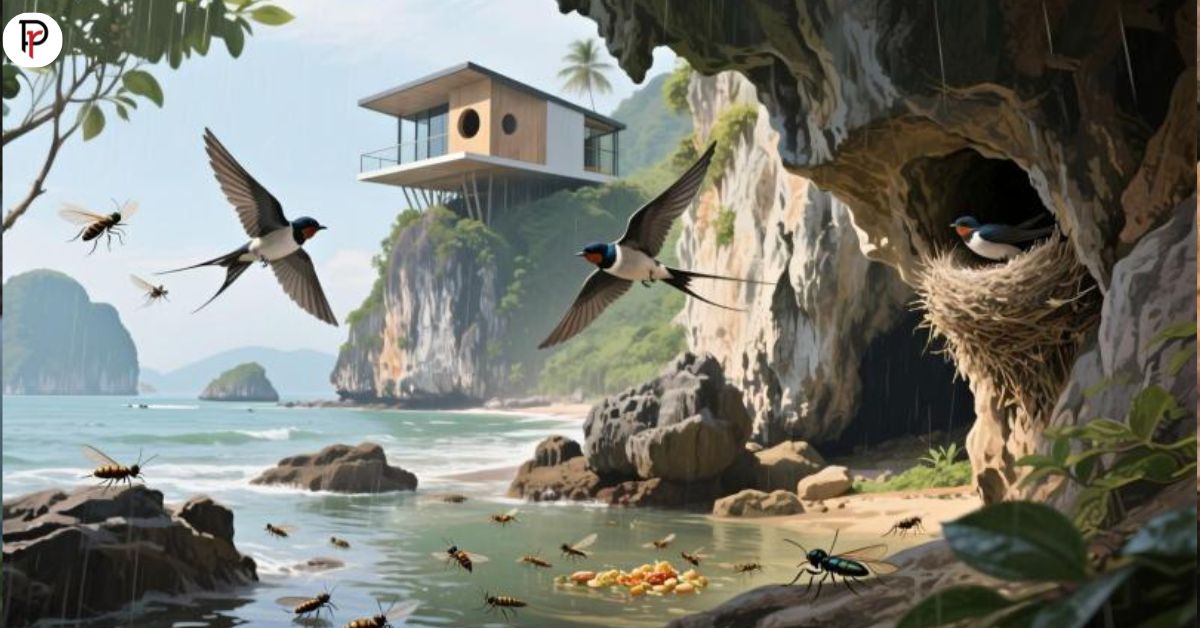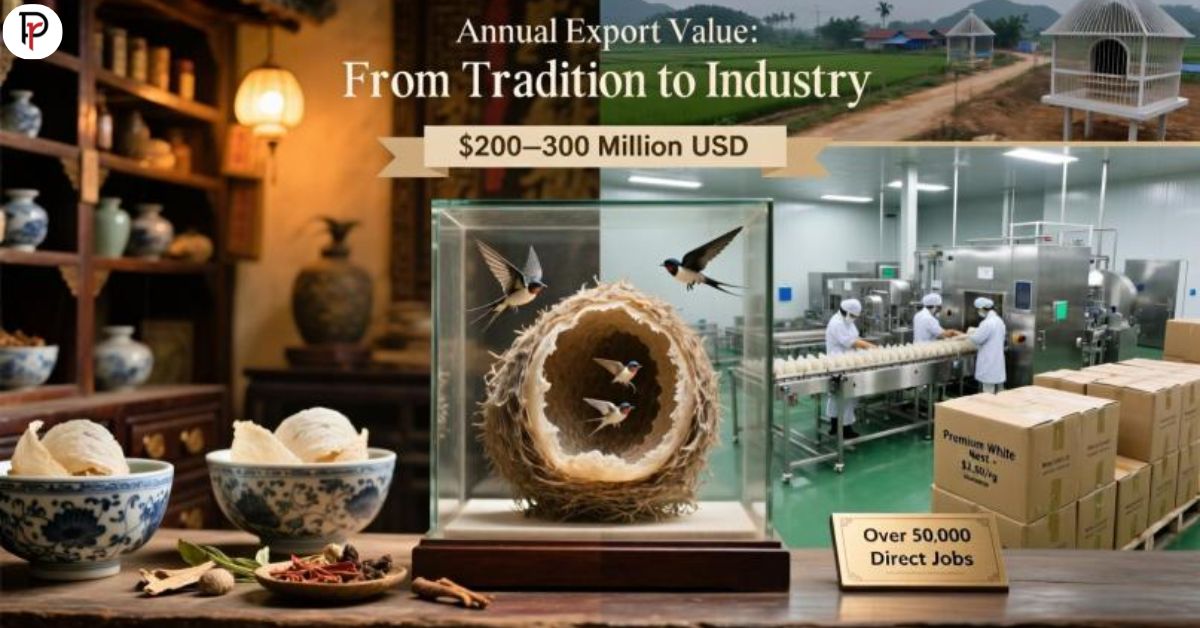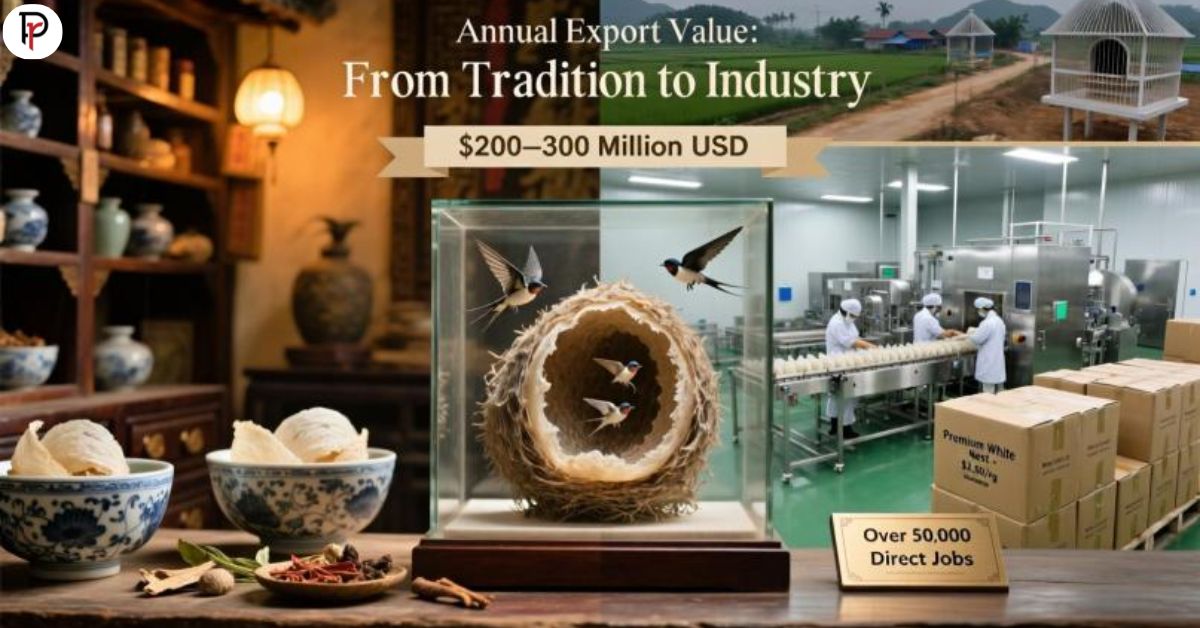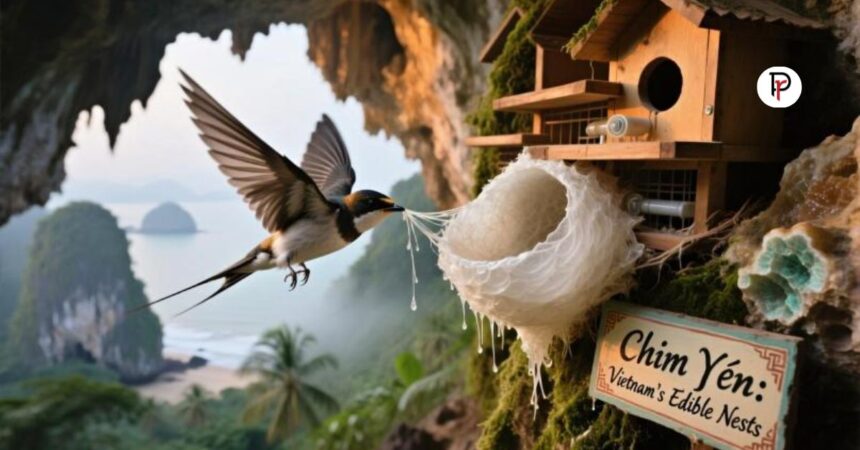Chim yến, commonly known as swiftlets, represent one of nature’s most fascinating and economically valuable bird species. These small, agile birds have captured human imagination for centuries, not for their appearance or song, but for their extraordinary ability to create edible nests using their own saliva.
Found primarily in Southeast Asia, chim yến have become synonymous with luxury cuisine and traditional medicine. Their nests form the foundation of one of the world’s most expensive food products, commanding prices that rival precious metals in some markets.
The story of chim yến extends far beyond simple bird watching. These creatures have shaped entire economies, influenced cultural traditions, and created sustainable industries that support thousands of families across Vietnam and neighboring countries.
Unique Characteristics: Masters of Flight and Navigation
Chim yến belong to the Apodidae family, scientifically distinct from common swallows despite their similar appearance. These birds possess remarkable adaptations that enable them to spend almost their entire lives airborne, landing only to nest and care for their young.
Their bodies are perfectly designed for continuous flight. Streamlined shapes, powerful breast muscles, and specialized wing structures allow chim yến to achieve incredible speeds and maneuverability. Some species can reach speeds exceeding 100 kilometers per hour during hunting and migration.
Perhaps most remarkably, chim yến navigate using echolocation, similar to bats. They produce rapid clicking sounds that bounce off surfaces, creating detailed mental maps of their surroundings. This ability proves essential when flying through dark caves where they typically nest.
If you want to read more, visit our blog page. We have more topics!
Physical Characteristics and Identification
Key Features of Chim Yến:
- Size: Typically 10-20 centimeters in length
- Weight: Usually between 15-50 grams
- Wings: Long, curved, and pointed for optimal flight
- Tail: Often forked, providing excellent steering control
- Beak: Small but wide, perfect for catching insects mid-flight
- Feet: Tiny and weak, unsuitable for perching on branches
| Species Type | Nest Quality | Economic Value | Habitat Preference |
| White-nest | Highest | Premium pricing | Coastal caves |
| Black-nest | Medium | Standard pricing | Inland caves |
| Grass-nest | Lowest | Basic pricing | Mixed environments |
The coloration of chim yến varies from dark brown to black on their upper parts, with lighter underparts. Their small size often surprises people unfamiliar with these birds, given the high value of their nests.
Habitat and Distribution: Where Chim Yến Call Home

Chim yến inhabit diverse environments across Southeast Asia, with Vietnam hosting several important species. These birds prefer coastal regions, limestone caves, and increasingly, man-made structures designed specifically for nest harvesting.
Natural habitats include sea cliffs, cave systems, and rocky outcrops near water sources. The availability of insects, which form their primary diet, determines habitat suitability. Coastal areas provide abundant flying insects, making them ideal locations for chim yến colonies.
Preferred Habitat Characteristics:
- High humidity levels (70-90%)
- Consistent temperatures (24-28°C)
- Protection from predators and weather
- Proximity to insect-rich feeding areas
- Suitable surfaces for nest attachment
Modern chim yến farming has created artificial habitats that mimic natural cave conditions. These purpose-built structures, called “bird houses,” provide controlled environments where colonies can thrive while allowing for sustainable nest harvesting.
The Art of Nest Building: Nature’s Edible Architecture
The nest-building process of chim yến represents one of nature’s most remarkable architectural achievements. These birds create their homes entirely from saliva, which hardens into translucent, cup-shaped structures that attach firmly to cave walls or artificial surfaces.
The construction process begins with the male chim yến selecting a suitable location. Using specialized salivary glands that produce a protein-rich secretion, the bird methodically builds the nest over several weeks. The saliva hardens quickly when exposed to air, creating a strong, flexible structure.
Different species produce nests of varying quality and composition. White-nest swiftlets create the most prized nests, composed almost entirely of pure saliva. These nests appear translucent white and command the highest prices in international markets.
The Nest Construction Timeline
Week 1-2: Foundation laying with initial saliva deposits
Week 3-4: Wall construction and shaping
Week 5-6: Final touches and interior smoothing
Total time: Approximately 35-45 days for completion
The female chim yến typically lays two eggs in the completed nest. Both parents share incubation duties for about 20 days before the chicks hatch. The young remain in the nest for another 45-50 days before fledging.
Cultural and Economic Significance: From Tradition to Industry

Chim yến nests have held cultural significance in Vietnamese and Chinese societies for over 1,000 years. Traditional medicine attributes numerous health benefits to consuming bird’s nest soup, including improved skin condition, enhanced immunity, and increased vitality.
The economic impact of chim yến extends throughout Southeast Asia. Vietnam ranks among the world’s largest producers of edible bird nests, with the industry generating hundreds of millions of dollars annually. This trade supports rural communities, creates employment opportunities, and drives technological innovation in sustainable harvesting methods.
Economic Impact Breakdown:
- Direct employment: Over 50,000 people
- Annual export value: $200-300 million USD
- Sustainable income for rural families
- Infrastructure development in remote areas
- Technology advancement in bird house design
The global market for chim yến nests continues expanding, particularly in China, Hong Kong, and other Asian markets. Premium white nests can sell for $2,000-3,000 per kilogram, making them more valuable than many precious metals.
Modern Farming Techniques: Sustainable Harvesting Innovation
Contemporary chim yến farming represents a remarkable fusion of traditional knowledge and modern technology. Purpose-built structures incorporate sophisticated climate control systems, acoustic equipment that plays swiftlet calls, and carefully designed interior layouts that encourage nesting.
These facilities require significant initial investment but offer sustainable long-term returns. Successful bird houses can produce hundreds of nests annually while maintaining healthy swiftlet populations. The key lies in creating environments that closely replicate natural cave conditions.
Essential Elements of Successful Bird Houses:
- Proper ventilation and humidity control
- Sound systems playing recorded swiftlet calls
- Appropriate entrance hole sizes and positioning
- Internal layout mimicking natural cave structures
- Regular maintenance and cleanliness protocols
The harvesting process follows strict schedules to ensure colony sustainability. Farmers typically harvest nests only after young swiftlets have fledged, allowing for natural reproduction cycles while maximizing nest quality.
If you want to read more, visit our blog page. We have more topics!
Conservation Challenges and Future Prospects

Despite their economic value, chim yến face several conservation challenges. Habitat loss from coastal development threatens natural nesting sites. Climate change affects insect populations, potentially impacting food availability for these specialized hunters.
Overharvesting in some regions has led to population declines, prompting stricter regulations and monitoring programs. Successful conservation requires balancing economic interests with ecological sustainability, ensuring that chim yến populations remain healthy for future generations.
Conservation Initiatives:
- Protected area designation for critical nesting sites
- Sustainable harvesting quotas and timing regulations
- Research programs monitoring population trends
- Community education about conservation importance
- International cooperation on migration route protection
The future of chim yến farming looks promising, with technological advances improving both productivity and sustainability. Smart monitoring systems, automated climate control, and data-driven management practices are revolutionizing the industry while supporting conservation goals.
Conclusion: Preserving Vietnam’s Flying Treasures
Chim yến represent a unique intersection of nature, culture, and economics that defines Vietnam’s relationship with its natural heritage. These remarkable birds have created opportunities for sustainable development while maintaining their important ecological roles.
Understanding and appreciating chim yến helps us recognize the intricate connections between wildlife conservation and human prosperity. As the industry continues evolving, maintaining this balance remains crucial for ensuring that future generations can benefit from these extraordinary creatures.
The story of chim yến demonstrates how traditional knowledge, modern technology, and conservation science can work together to create sustainable industries that benefit both people and wildlife.
Frequently Asked Questions
1. How long do chim yến live in the wild?
Chim yến typically live 10-15 years in natural conditions, though some species may live longer with proper protection from predators and environmental threats.
2. Can chim yến be kept as pets or in captivity?
No, chim yến cannot survive in traditional captivity due to their specialized dietary and flying requirements, making them unsuitable as pets.
3. Do all chim yến species produce edible nests?
Only certain swiftlet species produce nests suitable for human consumption, with white-nest and black-nest swiftlets being the most commercially valuable.
4. How many times per year do chim yến build new nests?
Most chim yến species build 2-3 nests annually, depending on seasonal conditions and successful breeding cycles.
5. What happens to chim yến during monsoon seasons?
During heavy rains, chim yến reduce flying activity and may temporarily relocate to more protected areas until weather conditions improve.
